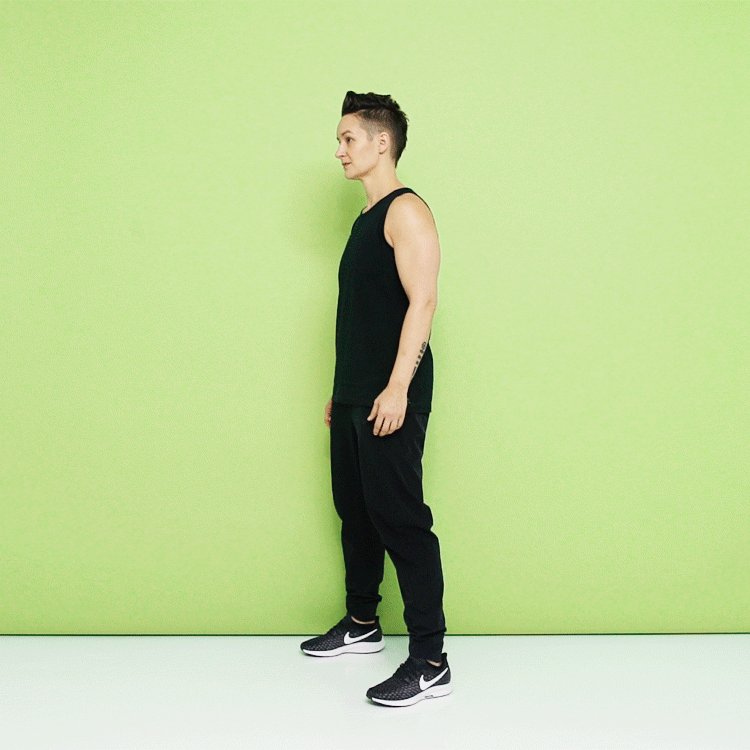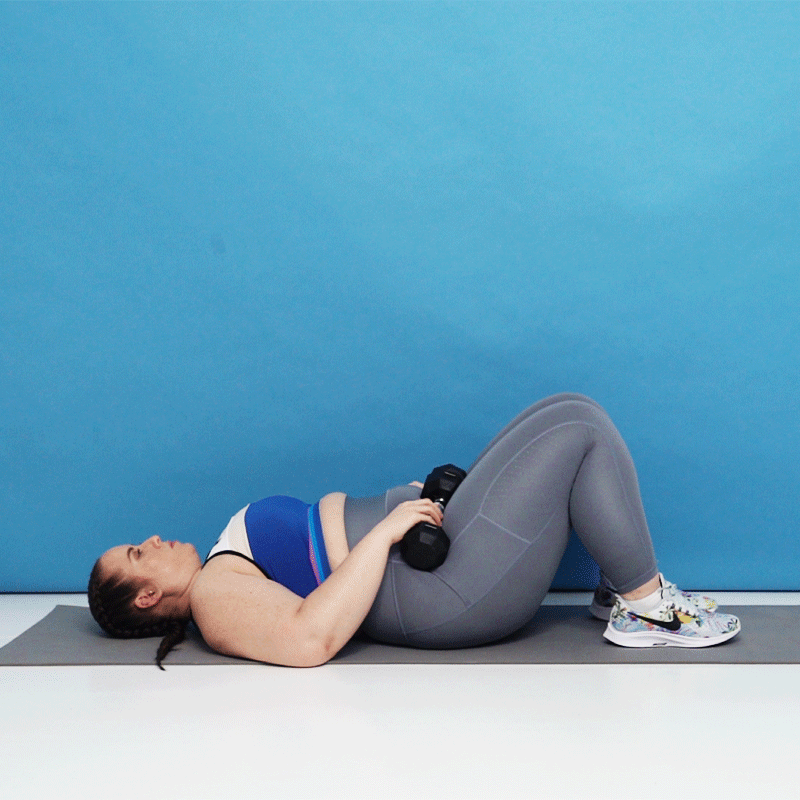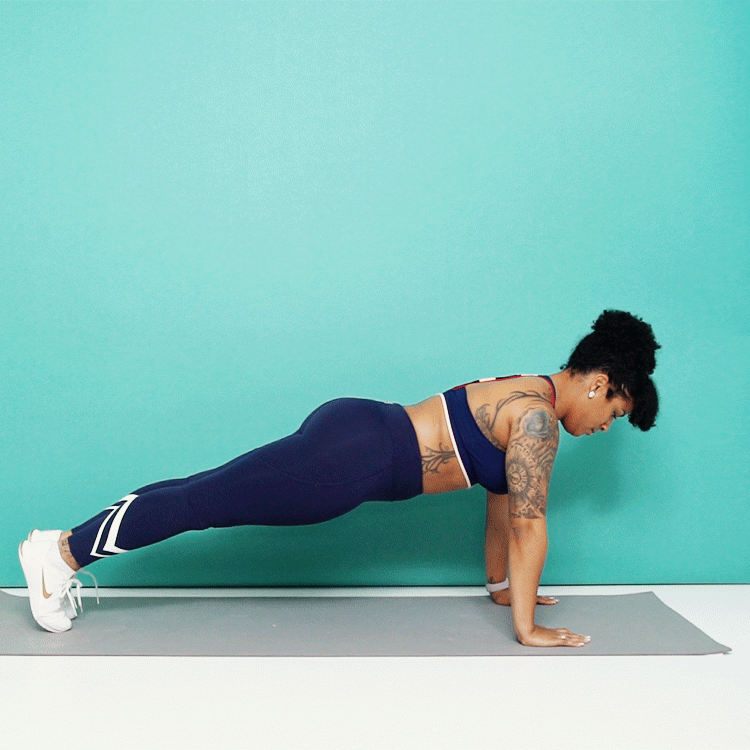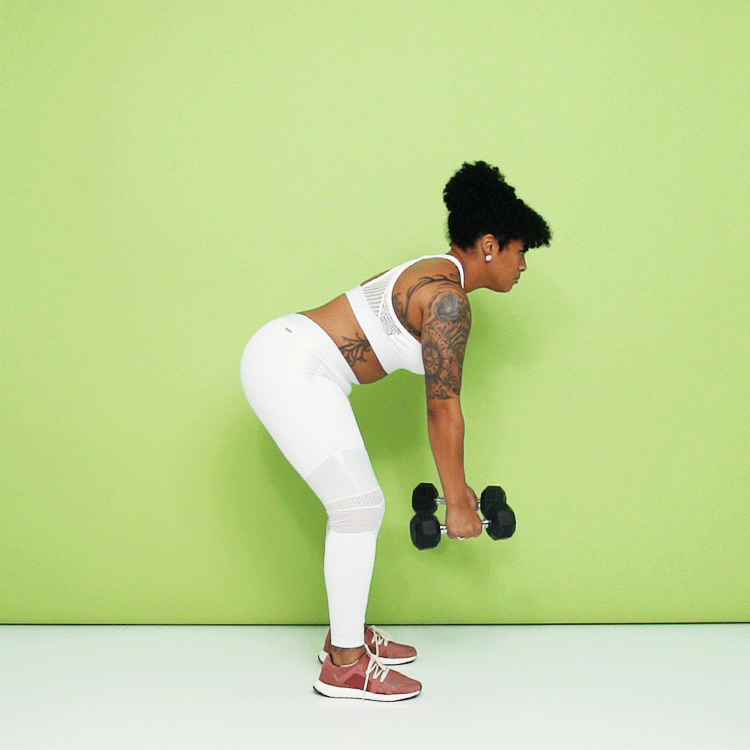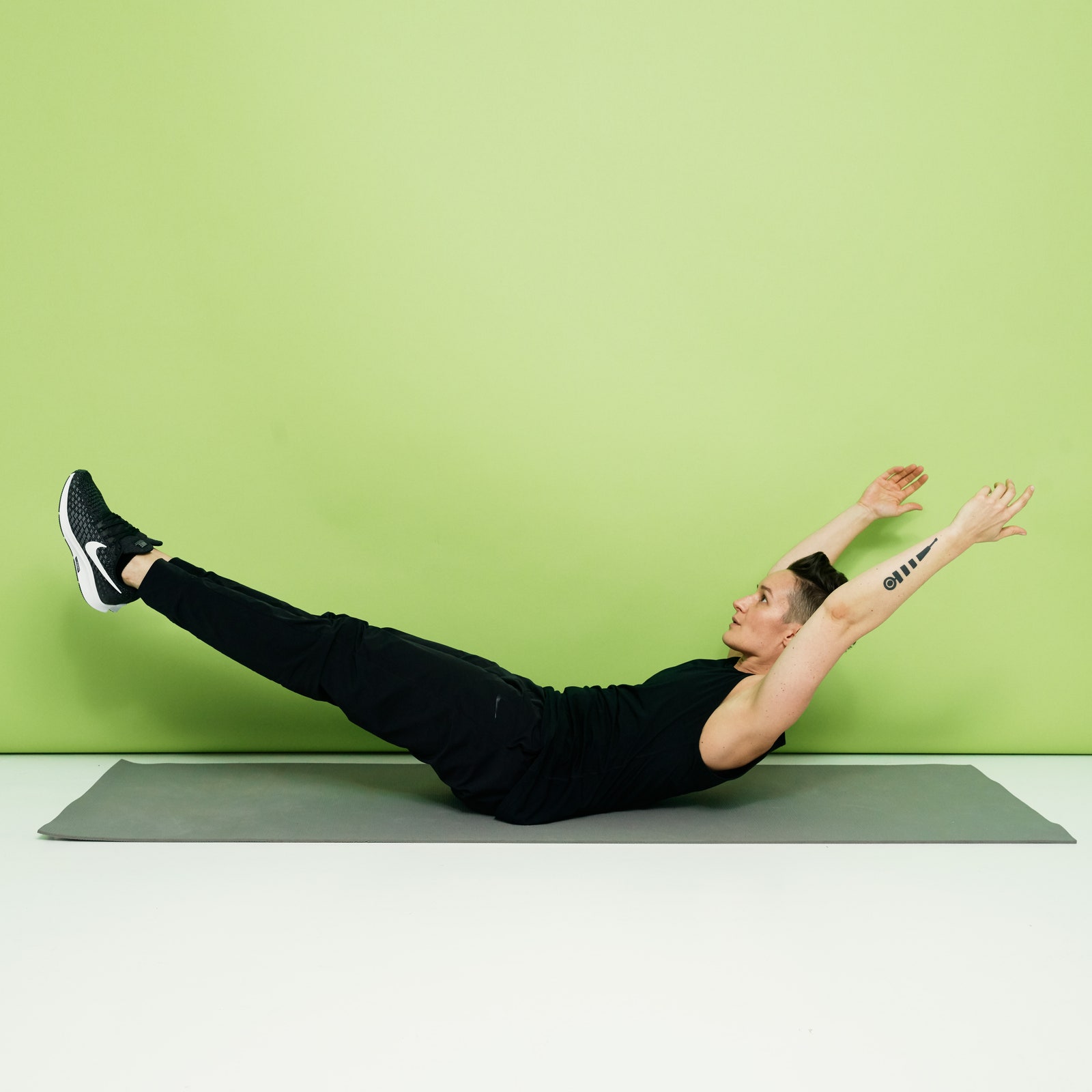Squat
One of the purest tests of strength, the squat incorporates almost all the muscles in your legs and core, says Yellin. The GIF above shows a bodyweight squat, which is a good way to nail down your form. Once your form is solid, you can add weight by holding dumbbells or a bar in front of your shoulders (front squat), resting a barbell on your back (back squat), or holding a weight in front of you (goblet squat).
- Stand with your feet slightly wider than hip-width apart.
- Lower your hips into a squat as you bend your knees and keep your back flat.
- Continue to lower yourself until your thighs are parallel to the floor.
- Push into the floor through your heels to return to start. That’s 1 rep.
- Keep your heels flat and knees aligned with your second toe so they don’t cave in.
